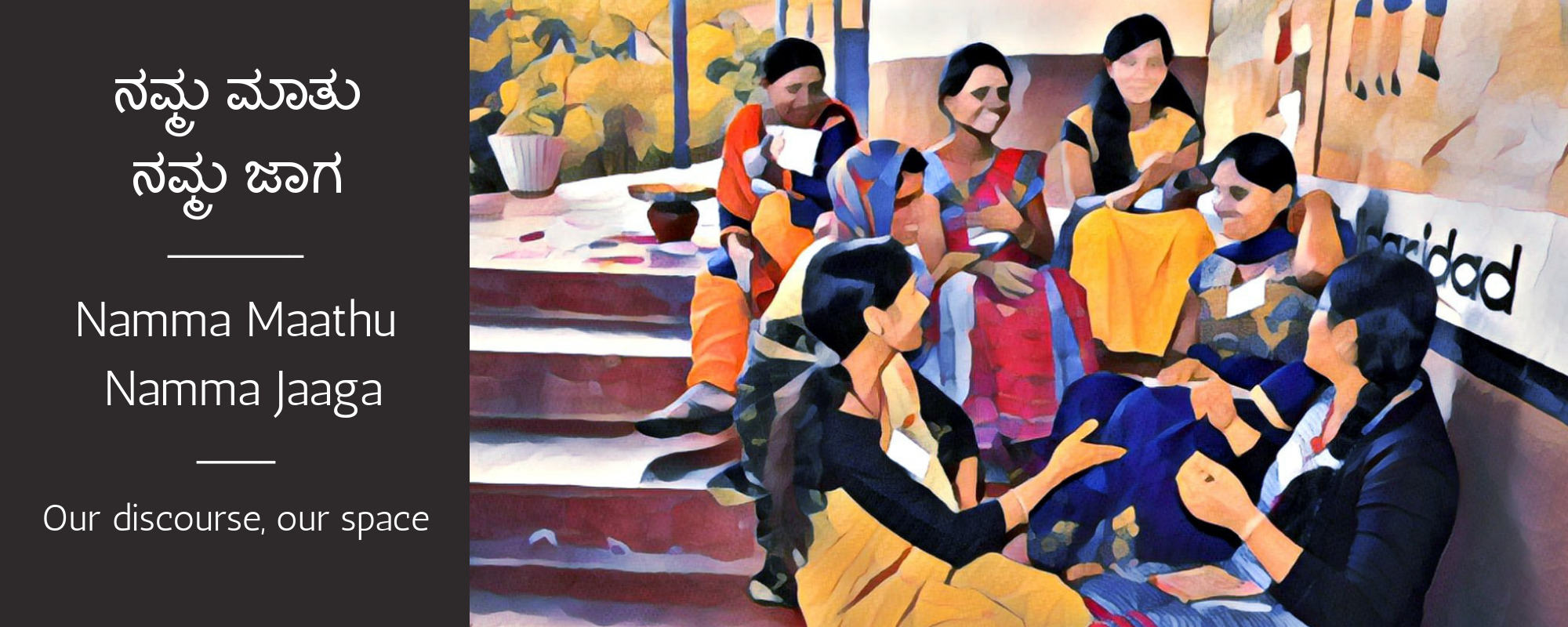
An initiation of Namma Maathu, Namma Jaaga
Sarada Mahesh | September 2018
To explain the Namma Maathu, Namma Jaaga project and its objectives, the team met with the key stakeholders such as anganwadi workers, ASHA workers, and members of the panchayat inHD Kote, Mysore

Prior to implementing the project on a full scale, the Prakriye team first decided to explain their objective to some of the main stakeholders — the anganwadi and ASHA workers, the men, and the members of the panchayat. When team Prakriye discussed the project, Namma Maathu, Namma Jaaga with them, these stakeholders had a positive reaction to the project. This was not only because of the past successes of the team in other projects, but also because they felt that there was a dire need for such an intervention.
The anganwadi and ASHA workers, in particular, spoke about how women in their villages are not ready to talk about the problem of violence faced by them at home, and even if they do, they are either frightened to take any step against the husband, or receive little to no support to do the same. While institutional mechanisms to deal with the problem do exist — for example, family courts, the police station and legislations like the Domestic Violence Act, 2005 — violence is a deep socio-structural problem that cannot be solved with just this. The team explained to them that during the course of their interventions, they would not only unpack the idea of gender, feminism and patriarchy, but would also assist women through other means like psycho-social counselling and institutional redressal, if they chose to do so.
However, acceptance from the community, came with its own set of reluctances. The anganwadi and ASHA workers lamented that tackling such problems might add to their pre-existing workload, and the hiccups in the system would not be of any help. They also explained how domestic violence is considered a “private problem” and that women would be regarded to be nosy or interfering in the private matters of another family if they do take up the issue.
The men in the villages were initially supportive of the project, as long as it involved teaching women about the ideas of gender justice. The team explained that perhaps their acceptance was only with respect to the theoretical aspects of gender justice; objections would arise when the women actually stand up for themselves and register complaints against the men.
During the conversation with the men, they warned that most cases of violence were merely a consequence of the “bad behavior” of women — they did not do their housework or did not take care of parents or children. It was this “irresponsible” behavior that angered their husbands and led to fights in the houses. The team assured them that their interventions in the case would not be one sided and that both parties would be given a due opportunity to be heard before any sort of action was taken.
Finally, the panchayat members pointed out that this project could probably help revive their social justice committee, which would have a minimum of two of their representatives to deal with the issues at hand. They admitted that since the system was neither transparent nor accountable, none of the members actually worked.
Combining these perceptions with their past experience, the Prakriye team began its journey to prevent and redress the problem of violence against women in the H.D. Kote district of Mysore.